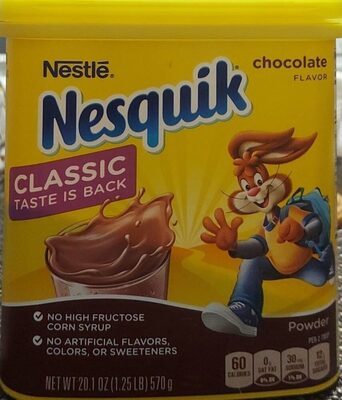Nesquik - 570g
This product page is not complete. You can help to complete it by editing it and adding more data from the photos we have, or by taking more photos using the app for Android or iPhone/iPad. Thank you!
×
Barcode: 0028000428433 (EAN / EAN-13) 028000428433 (UPC / UPC-A)
Quantity: 570g
Packaging: Plastic
Brands: Nesquik
Categories: Beverages, Cocoa and its products, Cocoa and chocolate powders, Instant beverages, Chocolate powders, fr:Cacaos et chocolats en poudr, fr:Chocolats en petit-déjeuner
Labels, certifications, awards: No artificial flavors, fr:SmartLabel
Origin of ingredients: United States
Manufacturing or processing places: USA
Traceability code: UD 43990812
Link to the product page on the official site of the producer: https://www.goodnes.com/nesquik/
Countries where sold: United States
Matching with your preferences
Environment
Carbon footprint
Packaging
Transportation
Report a problem
Data sources
Product added on by kiliweb
Last edit of product page on by roboto-app.
Product page also edited by charlesnepote, chevalstar, marshall-vero, openfoodfacts-contributors, packbot, yuka.E79dHdGoOdV5F9_fjKZu02GJDuTeOMYIN1MGog, yuka.UY1DGtuLJfclJPHDwJwO2DKcRLr4PcREOlssog, yuka.sY2b0xO6T85zoF3NwEKvlm1IQdrzoTnKbx_RsBfS3YyADsLRMe5t5pTaLag, yuka.sY2b0xO6T85zoF3NwEKvlnVWbtjDkhTqHBriuUOH5922LKfOZuFr4K75Mas.








